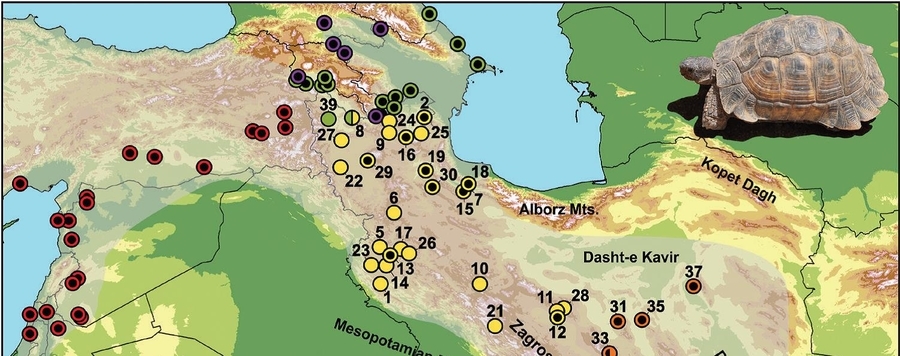
Range dynamics in Iranian and Transcaucasian tortoises
The range dynamics of species distributed in temperate zones was significantly influenced by climatic fluctuations during the Pleistocene. However, little is known on how glacial and interglacial cycles affected the distribution of species occupying lower latitudes. The aim of this study was to assess Quaternary range dynamics of the spur-thighed tortoise (Testudo graeca) in Iran and Transcaucasia and to infer how range fluctuations influenced the species’ genetic diversity. We analysed mitochondrial DNA variation of samples from Iran and Transcaucasia and reconstructed the species’ palaeogeography by projecting species distribution models (SDMs) onto palaeoclimatic conditions of the mid-Holocene (6000 BP) and the Last Glacial Maximum (LGM, 21 000 BP). We found three mitochondrial lineages in Iran, corresponding to the subspecies T. g. armeniaca, T. g. buxtoni and T. g. zarudnyi, whose current distribution is limited predominately by precipitation. A combination of SDMs and demographic analyses revealed that the ranges of these subspecies experienced only a slight shift during the Quaternary and did not expand significantly after the LGM. These results for T. graeca indicate that range dynamics of ectothermic taxa occupying lower latitudes in the western Palaearctic might be more complex and may not follow a simplistic scenario of glacial retraction and postglacial expansion.






